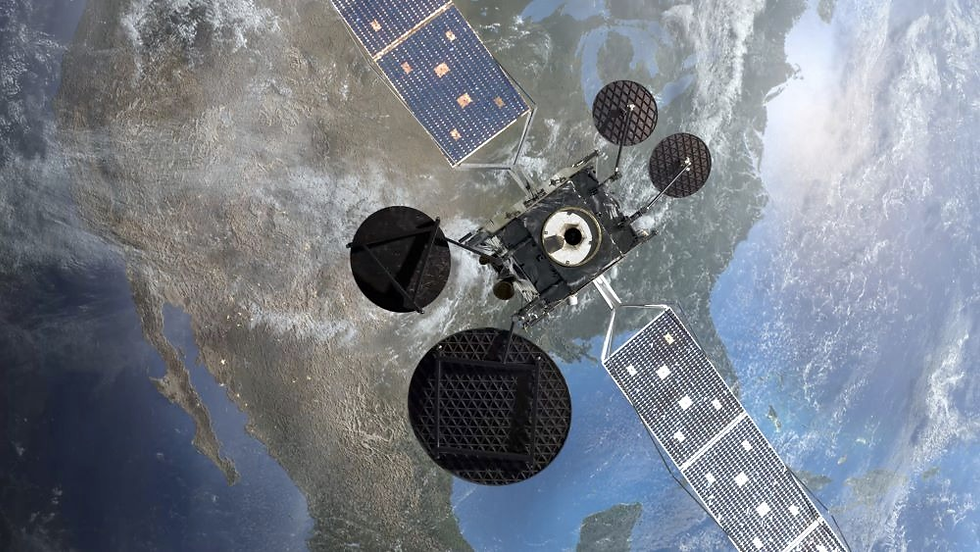Vietnam Builds 21 Artificial Islands in South China Sea, Approaching China's Construction Scale
- MM24 News Desk
- 1 day ago
- 4 min read

Vietnam has constructed 21 artificial islands in the disputed Spratly Islands since 2021, creating 2,200 acres of artificial land compared to China's 4,000 acres, according to Center for Strategic and International Studies (CSIS). Satellite imagery shows Vietnam expanded to eight new features in 2025, building munitions storage, a two-mile-long airstrip, and defensive trenches in waters where over 21 percent of global trade worth $3.37 trillion transits annually.
Vietnam has built a total of 21 independent artificial islands in the disputed South China Sea over the past four years and is set to match, or even surpass, the scale of such activity there by China, challenging Beijing's grip on one of the most critical maritime thoroughfares.
According to new satellite imagery reviewed by the Center for Strategic and International Studies (CSIS), a U.S. think tank, Vietnam has been reclaiming land on the disputed Spratly Islands since at least 2021. However, Hanoi has dramatically increased the construction of artificial islands in the Spratly Islands since the beginning of this year, reported CSIS.
New satellite imagery shows that Vietnam has expanded island-building to eight new features that were previously untouched by reclamation activity between 2021 and 2024. Furthermore, Vietnam is not just building artificial islands in the crucial maritime thoroughfare, but is also heavily militarizing them.
According to a recent Wall Street Journal report, the new islands now support multiple ports, a two-mile-long airstrip to accommodate large military aircraft, ample munitions storage, and defensive trenches that could host heavy weaponry.
These artificial islands are built from sand, coral, and rock carved out from the bottom of the sea. These artificial islands allow Vietnam to project power in the Spratlys and to challenge China's own island-building process in the region.
Notably, Vietnam's island-building activity in the crucial maritime thoroughfare surpasses that of any other Southeast Asian country, except China, which began the process many years earlier.
The South China Sea is a major shipping route. The United Nations Conference on Trade and Development estimates that over 21 percent of global trade — amounting to $3.37 trillion — transited through these waters, including the Spratly Islands, in 2016.
It is also home to rich fishing grounds that provide for the livelihoods of millions of people across the region. More than half of the world's fishing vessels operate in this area. Besides, the region is rich in natural resources, with vast oil and natural gas reserves.
Satellite images show that Vietnam has created new land on all 21 rocks and the so-called low-tide elevations—reefs that were previously submerged at high tide—that it occupies in the Spratlys. On the other hand, China has created seven such artificial islands in the archipelago.
According to a CSIS paper, by March 2025, Vietnam had built more than 2,200 acres of artificial land in the South China Sea, compared with 4,000 acres constructed by China, according to CSIS.
A latest analysis by the Asia Maritime Transparency Initiative (AMTI) estimated that as of March, Vietnam had created "about 70 percent as much artificial land in the Spratlys as China had."
"Reclamation at these eight new features all but ensures that Vietnam will match – and likely surpass – the scale of Beijing's island-building," it added.
Furthermore, the CSIS report details the military structures built by Vietnam in the artificial islands. Munitions storage, in the form of six containers surrounded and separated by thick walls, has been constructed at each newly expanded reef. While most reefs only have one such structure, Barque Canada has the distinction of having three depots, the CSIS report said.
READ ALSO: https://www.modernmechanics24.com/post/lockheed-martin-korean-air-sign-partnership-framework
Vietnam's frantic island-building activity in the SCS, along with its militarization, suggests that Hanoi is determined to protect its claims in the area, which are disputed not just between Vietnam and China but also by the Philippines, Taiwan, and Brunei.
China and Vietnam have already fought multiple bloody wars in the 1970s and 1980s. In 1974, Chinese forces seized the Paracel Islands from South Vietnam. In March 1988, Chinese and Vietnamese naval forces clashed in the Spratly Islands, with China killing 74 Vietnamese sailors and taking possession of Johnson South Reef.
China started building artificial islands in the Spratlys in 2013. China has also built air strips, ports, fortifications, munition depots, and bunkers on these islands. Beijing has also deployed powerful radars and other surveillance infrastructure that give it visibility of other countries' movements across the waterway.
Vietnam followed with its own island-building activity in 2021 and is trying to match Beijing inch by inch. However, few believe that, with its much smaller economic and industrial base and modest navy and air force, Hanoi could stand up to Beijing in an all-out war.
"I'm personally not too convinced that it'll be any game-changer to the South China Sea power balance," Collin Koh, a senior fellow at the S. Rajaratnam School of International Studies in Singapore, told the Hong Kong-based South China Morning Post.
"At the end of the day, these artificial island outposts are static physical possessions and serve as symbols of their respective claims. However, one should otherwise see these outposts more as an enabler than a tool for projection of presence," he added.
The real instruments of power projection are "mobile assets" such as aircraft and vessels, according to Koh. According to Vu Lam, a policy analyst and ASEAN observer, Vietnam's "visible reclaiming pattern … fits a resilience narrative rather than a bid for regional dominance."
However, it remains to be seen how Beijing will respond to this challenge to its dominance in one of the world's most strategically important waterways.



Comments